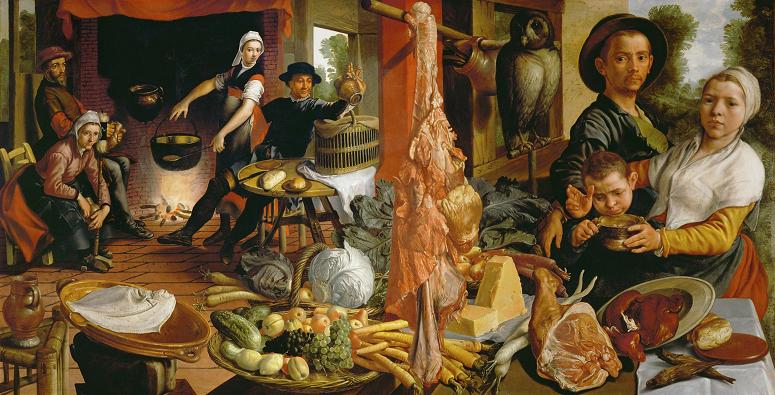Statens Museum for Kunst. The National Gallery of Denmark is the Danish national gallery, located in the centre of Copenhagen. The museum collects, registers, maintains, researches and handles Danish and foreign art dating from the 14th century to the present day. The museum's collections constitute almost 9,000 paintings and sculptures, approximately 240,000 works of art on paper as well as more than 2,600 plaster casts of figures from ancient times, the middle-ages and the Renaissance. Most of the older objects come from the Danish royal collection. Approximately 40,000 pieces from the collections are expected to be made available online by 2020. The display of European Art 1300-1800 is a comprehensive collection of art over the 500-year period, featuring works by Mantegna, Cranach, Titian, Rubens and Rembrandt. The art is spread over thirteen rooms, and is the oldest art collection in Denmark, with a particular emphasis on Danish, Dutch, Flemish, Italian, French, Spanish and German pieces. Danish and Nordic Art 1750-1900 charts Scandinavian art from the beginnings of Danish painting through the Golden Age to the birth of Modernism. It displays over 400 works through 24 galleries. It features work by Abildgaard, Eckersberg, Kobke, Ring, and Hammershoi. SMK gained its modern French art collection in 1928 when it was donated by the late collector Johannes Rump. This collection features some of the museum's most famous pieces from artists such as Matisse, Picasso, Derain and Braque. The collection was first offered to the SMK by Rump in 1923, but was rejected by the director Karl Madsen, as he did not believe it to be of a high enough quality. Housed in the museum's 1993 extension, this 20th and 21st century collection is predominantly focused on the most important examples of modern Danish art. A long corridor of paintings looking onto Ostre Anlaeg park works as a chronological overview of the work from this period, whilst the smaller galleries focus on specific artists or movements. The Royal Collection of Graphic Art contains more than 240,000 works: copperprints, drawings, etchings, watercolours, lithographic works and other kinds of art on paper, dating from the 15th century to the present day. The beginnings of this collection were made around the time of Christian II. In his diary from 1521 the German painter Albrecht Durer says he has given the King the best pieces of all my prints. In 1843 the various works, which had so far been the king's private collection, were displayed to the public. It was then moved into the Statens Museum for Kunst when the first building was completed in 1896, along with The Royal Collection of Paintings and The Royal Cast Collection. Although the papers contain a great number of foreign works, Danish art constitutes the main part of the collection. This collection is open to the public through the Print Room, access to which must be booked in advance of arrival. The Royal Cast Collection is held at the West India Warehouse, Toldbodgade 40, between The Little Mermaid and Nyhavn in Copenhagen. It consists of over 2,000 naked plaster casts of statues and reliefs from collections, museums, temples, churches, and public places throughout the world, from antiquity to the Renaissance. The Royal Cast Collection is only open for special events. The art was first put on display in 1895 with the intention of edifying visitors about the progression of representations of the human form over time in parallel with growing social, political and aesthetic awareness in the Western world. At the start of the Second World War the art of antiquity became increasingly unfashionable, associated with an archaic artistic tradition. In 1966, as abstract art became more popular, the Royal Cast Collection was removed to a barn outside Copenhagen for storage and only revived in 1984 when it was removed to the West India Warehouse. The collections of the Danish National Gallery originate in the Art Chamber of the Danish monarchs. When the German Gerhard Morell became Keeper of Frederick V's Art Chamber about 1750, he suggested that the king create a separate collection of paintings. To ensure that the collection was not inferior to those of other European royal houses and local counts, the king made large-scale purchases of Italian, Netherlandish and German paintings. The collection became particularly well provided with Flemish and Dutch art. The most important purchase during Morell's term as keeper was Christ as the Suffering Redeemer by Andrea Mantegna. 'Det Kongelige Billedgalleri' was housed in Christiansborg Palace until 1884 when the castle burnt down. It was not until the opening of the museum in 1896 that the art had a new home.
more...














